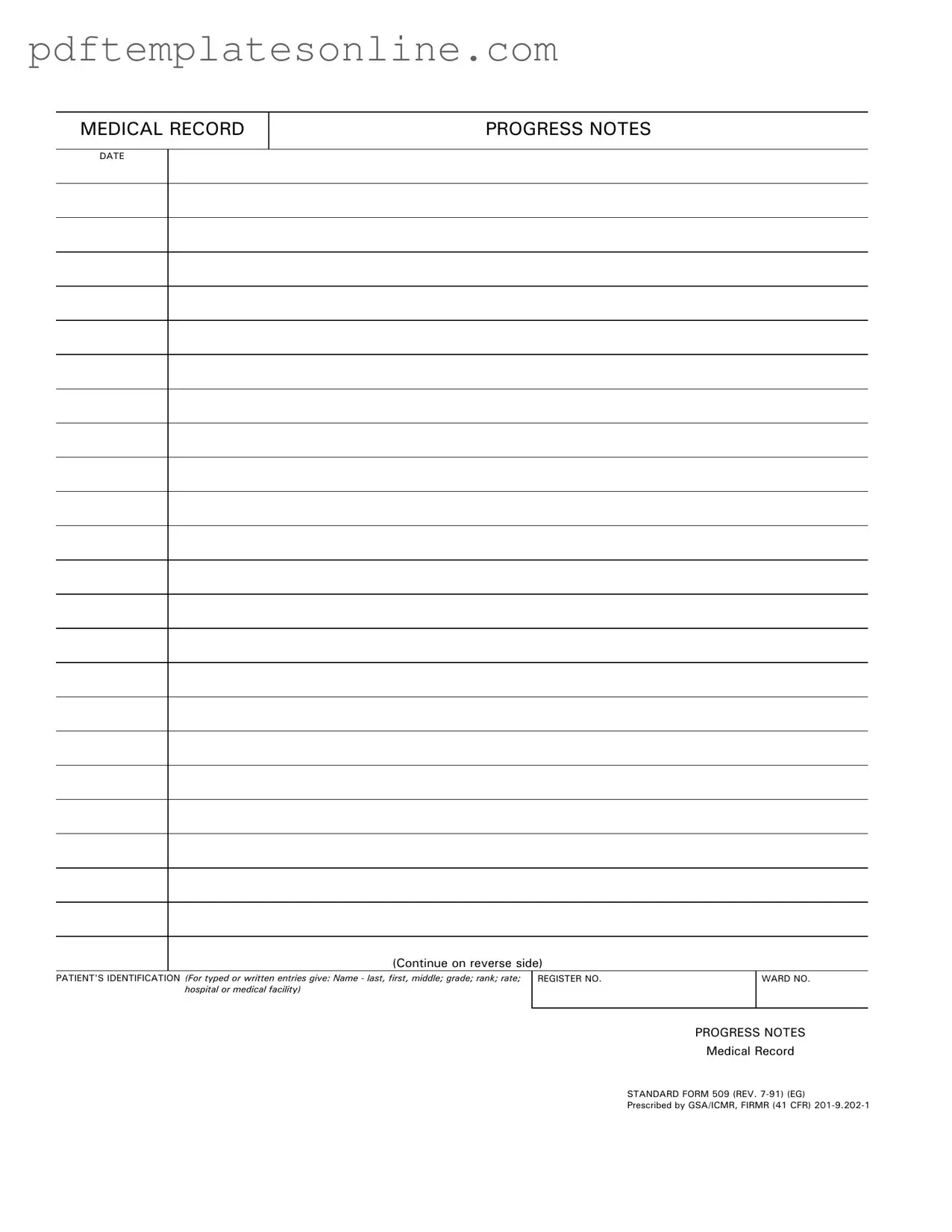Filling out the Progress Notes form accurately is crucial for maintaining clear and effective medical records. However, several common mistakes can lead to confusion and potential issues down the line. Understanding these pitfalls can help ensure that the form is completed correctly.
One frequent error is failing to include all necessary patient identification details. Each entry should contain the patient's full name, including last, first, and middle names. Omitting this information can create difficulties in tracking patient history and treatment. Always double-check that the identification section is fully completed.
Another mistake often made is neglecting to update the date of the entry. Each Progress Note should reflect the date it was completed. Without this critical information, it becomes challenging to maintain a chronological record of patient care. Ensure that the date is clearly written and corresponds to the day the notes were made.
In addition, many individuals overlook the importance of using the correct format for the medical record number and ward number. These identifiers are essential for proper organization and retrieval of patient records. Using an incorrect or incomplete number can lead to significant delays in accessing patient information. Always verify these numbers before submission.
Additionally, some entries may lack sufficient detail in the Progress Notes section itself. It’s vital to provide a clear and concise account of the patient’s condition, treatment, and any changes observed. Vague notes can lead to misunderstandings among healthcare providers. Take the time to articulate observations accurately.
Lastly, a common oversight is failing to sign or initial the form. Each Progress Note must be authenticated by the individual completing it. This step confirms accountability and ensures that the information can be traced back to the responsible party. Always remember to sign the document before submitting it.
